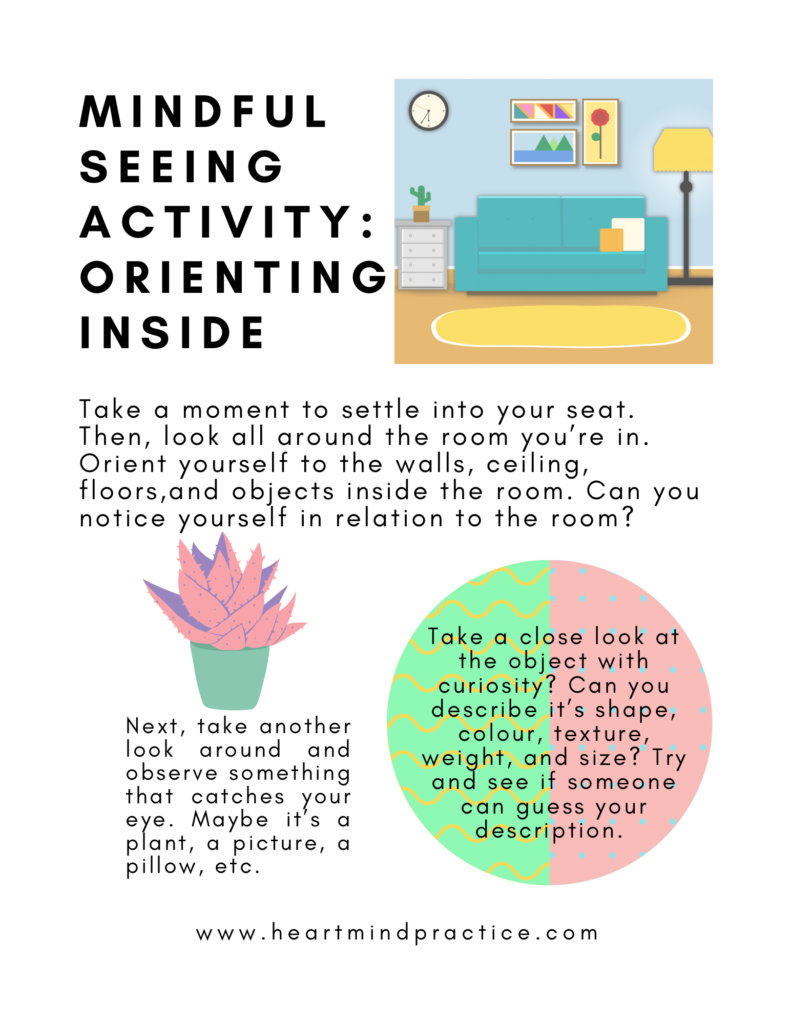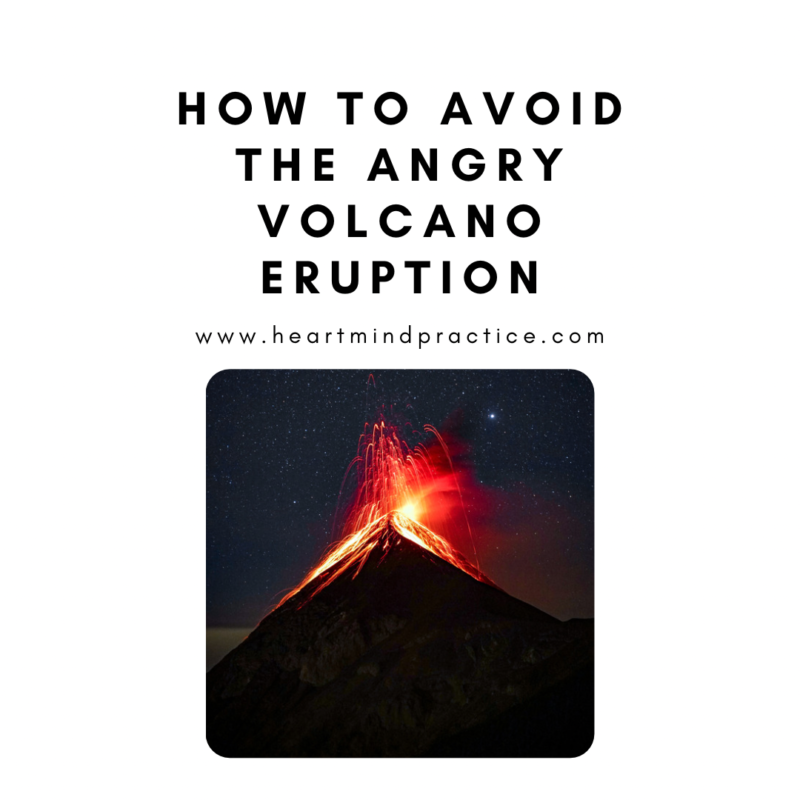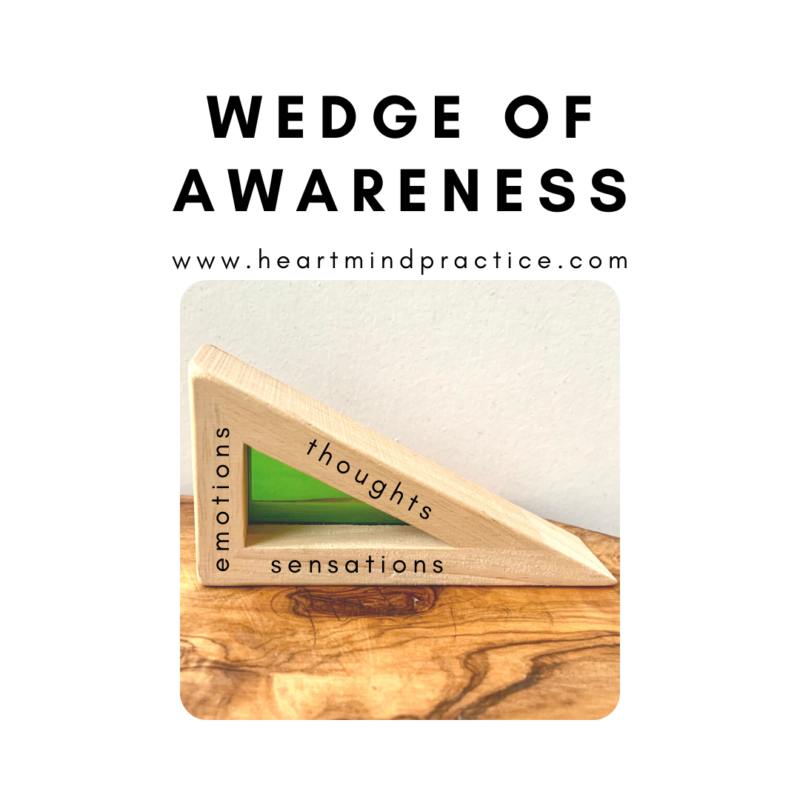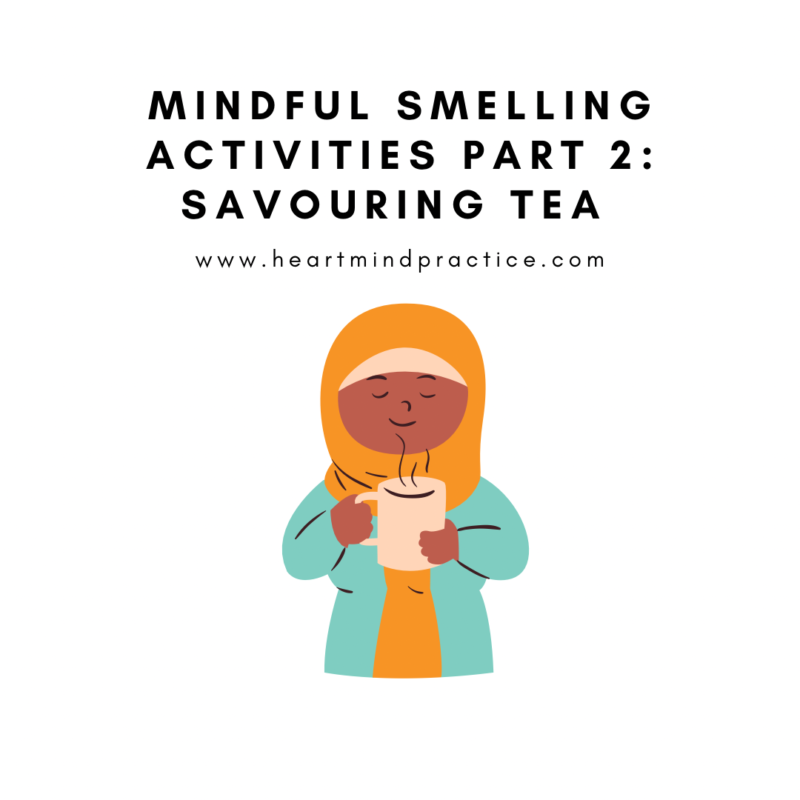“The window to the soul” is actually a part of your brain. The retina is amazing; it is the only part of your central nervous system that sits outside your skull. The retina extracts all your visual experience from the outside world and ships that information off to your brain for “understanding”. And not just for seeing objects. It also informs the brain about time of day and your location relative to the equator. Pupil size is the fastest readout of your internal state too…the pupils dilate to better track novel and interesting things.
Andrew Huberman, Ph.D., Neuroscientist (2018)
Our eyes are so amazing and I’ve been learning so much about our brain and nervous system from Andrew Huberman’s Instagram page. Yes, Instagram has been informing me about science.
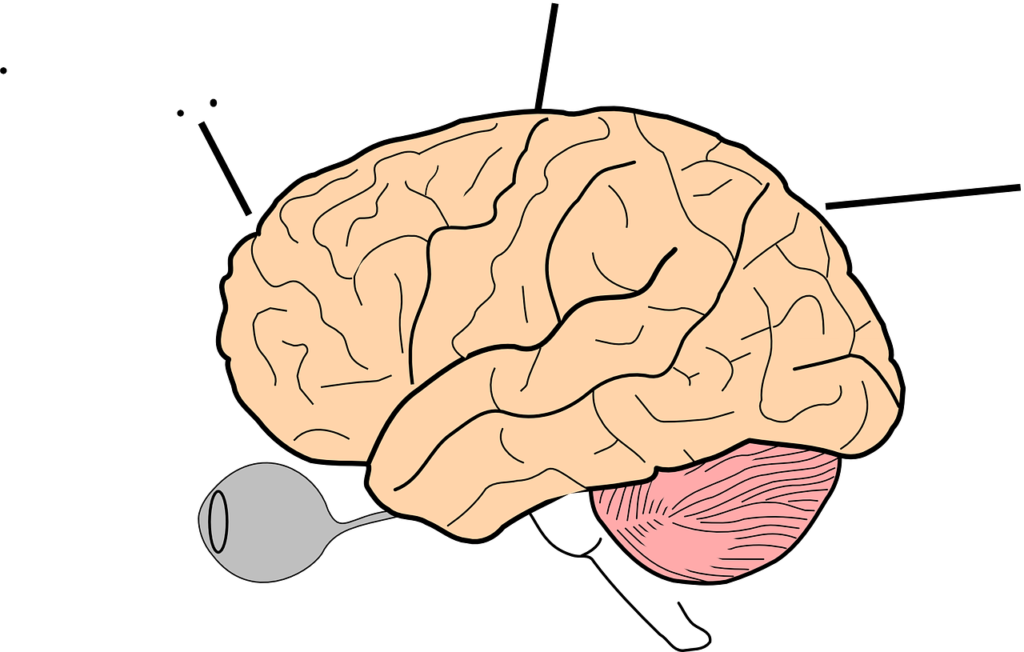
What we look at, what we pay attention to, how we view things, and how we spend our time using our eyes matters. I’ve used mindful seeing activities with young people and learning this information about how our eyes are part of our brain gives more meaning and understanding to these practices.
Mindful seeing activity: Orienting
Orienting is a simple practice we can do anywhere we go because our eyes always come along with us or are we following our eyes? Orienting is a concept I learned in yoga about calming the nervous system. Animals that have escaped a dangerous situation will orient themselves by looking around the environment to ensure safety afterwards. In a similar manner we can settle down our nervous system and let it know we are safe by orienting (looking around our current space and situating ourselves in it).
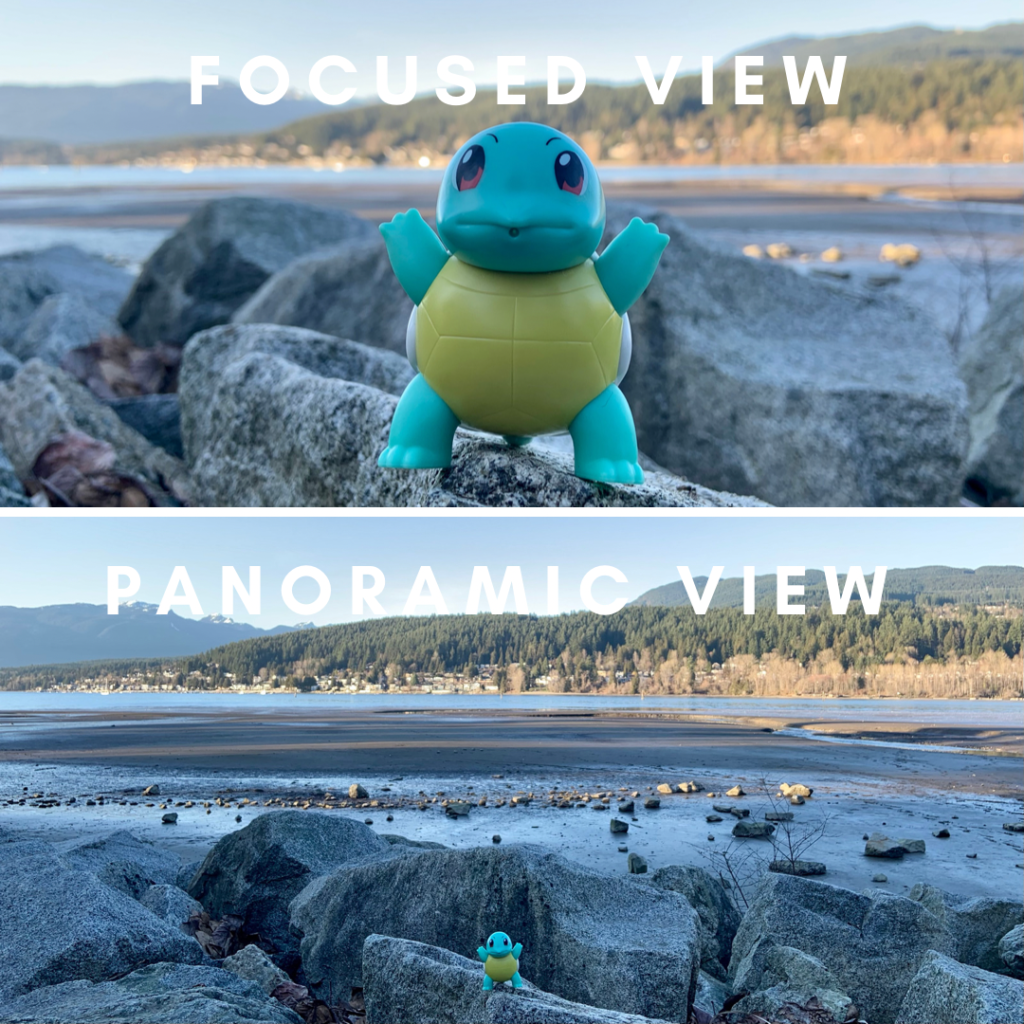
It’s important to know how to zoom in and zoom out with our eyes and our lives: viewing life in portrait mode vs panoramic mode. According to Dr. Huberman, when we’re stressed or excited, our vision shrinks as if we’re looking through soda straws and everything around it becomes blurry. And when we’re relaxed, we see things in panoramic vision where our physical lens actually relaxes and flattens. We can purposefully use our eyes and vision to change our state of arousal. By viewing the horizon or taking breaks to look outside, we are engaging our panorama vision and this turns off our attention and stress mechanisms. When we are relaxed, we can have more perspective in vision and in life.
The first worksheet is a mindful activity of orienting ourselves in the room we are in. The second worksheet is a mindful activity of looking outside towards the horizon. How will you use your eyes today?
